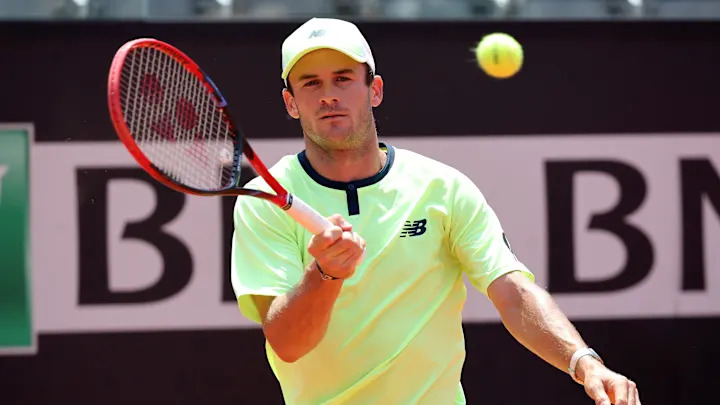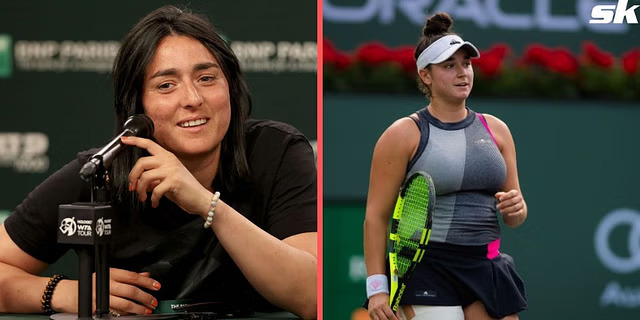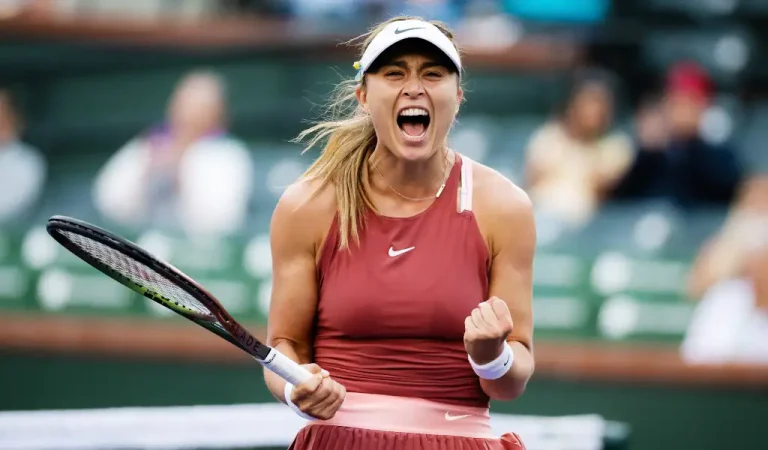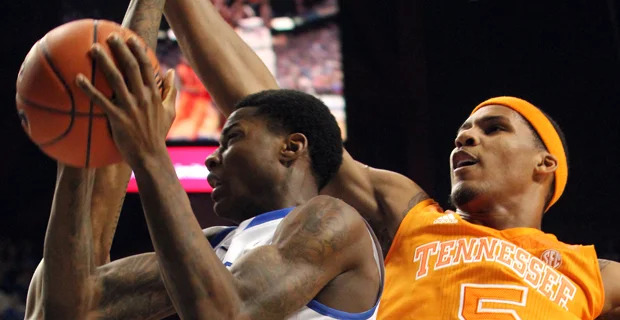
Table of Contents
Key Takeaways:
- Tommy Paul’s injury at the French Open puts his grass-court season and American ATP Hopes for Wimbledon at risk.
- The tight transition from clay to grass courts frequently leads to increased injury concerns for top players.
- Withdrawals from key lead-up tournaments can significantly impact a player’s ATP Rankings.
The demanding clay courts of Roland Garros often extract a heavy toll, and the 2025 French Open has proven no exception, particularly for American ATP Hopes. With the grass-court season rapidly approaching, concerns are mounting over the fitness of several key American players, most notably Tommy Paul, whose participation in upcoming grass tournaments and even Wimbledon now appears dicey due to recent injuries. This situation underscores the brutal physical demands of professional tennis and the delicate balance players must maintain between peak performance and injury prevention.
The Clay-to-Grass Gauntlet: A Recurring Challenge
The transition from the slow, grinding nature of clay-court tennis to the faster, lower-bouncing grass surfaces is one of the most abrupt and challenging shifts in the ATP calendar. The different sliding mechanics on clay versus the sudden stops and starts on grass place immense strain on players’ bodies. It’s a period where pre-existing niggles can quickly escalate into full-blown injuries, impacting a player’s entire grass-court campaign, including the prestigious Wimbledon.
Historically, this quick turnaround has been a point of contention for many players and pundits. The physical demands of the French Open, often pushing players to their limits over grueling five-set matches, leave little time for recovery and adaptation before the grass season kicks into high gear. This year, it’s particularly noticeable how this has affected American ATP Hopes.
Tommy Paul’s Injury Woes: A Major Setback
One of the most significant blows to American ATP Hopes comes from the recent injury sustained by Tommy Paul. Paul, who had a strong showing at the French Open, reaching the quarterfinals before falling to Carlos Alcaraz, revealed he has been battling abdominal issues and adductor pain. These discomforts, present even during his second-round match against Márton Fucsovics, have now forced him to withdraw from the Queen’s Club Championships, a significant grass-court warm-up event where he was the defending champion.
This withdrawal carries considerable weight beyond just missing a tournament. Paul will forfeit the 500 ranking points he earned last year, a substantial loss that could impact his ATP Rankings going forward. His absence is a stark reminder of how quickly fortunes can change in the unpredictable world of professional tennis. The implications for American ATP Hopes are clear: without their top-ranked players at full strength, the path to deep runs at Wimbledon becomes significantly more challenging.
The Broader Impact on American ATP Hopes
While Paul’s injury is currently the most prominent, the strenuous French Open likely took its toll on other American players as well. Maintaining peak physical condition throughout such a demanding season is a Herculean task. The physical wear and tear can manifest in various ways, from muscle strains and joint pain to fatigue that diminishes performance.
The depth of American talent on the ATP Tour has been growing, with players like Ben Shelton, Taylor Fritz, and Sebastian Korda consistently challenging at the top. However, injuries can derail even the most promising trajectories. A single injury can lead to a cascade of issues, affecting a player’s confidence, match fitness, and ability to compete consistently at the highest level.
Recovery and The Road Ahead
For players like Tommy Paul, the focus now shifts entirely to recovery and rehabilitation. Sports medicine professionals emphasize the importance of a structured approach to returning from injury, prioritizing complete healing over a rushed comeback. As reported by sources like Pro Football Network, Paul himself acknowledged the need for an MRI after his French Open matches. The transition to grass demands nimble footwork and powerful serving, both of which would be severely hampered by abdominal and adductor issues.
Effective recovery strategies in tennis often involve a multi-faceted approach. According to Dr. Robert Marx, an orthopedic surgeon specializing in sports injuries, “The key to a successful return to play for tennis players is not just about physical healing, but also about rebuilding strength, flexibility, and court-specific movement patterns without overstressing the recovering area.” This often includes:
- Rest and active recovery: Allowing the body to heal while maintaining light movement.
- Physical therapy: Targeted exercises to regain strength and mobility.
- Nutrition and hydration: Fueling the body for optimal repair.
- Gradual return to training: Slowly increasing intensity to prevent re-injury.
For the American ATP Hopes to truly shine on the grass courts, the recovery and preparedness of their top players will be paramount. The coming weeks will reveal whether Paul and others can make the swift and successful transition necessary to contend at Wimbledon.
Looking Ahead to Wimbledon and Beyond
Wimbledon, the pinnacle of the grass-court season, looms large. The performance of American players at this Grand Slam is always a significant barometer for the state of American ATP Hopes. With Tommy Paul‘s grass attendance for the crucial warm-up event at Queen’s Club now ruled out, his preparation for Wimbledon will be significantly curtailed. This could impact his ability to replicate his 2024 success at the tournament.
The domino effect of injuries can be far-reaching, influencing not only individual player performance but also the overall competitive landscape. As the tour progresses, keeping an eye on the injury reports and player withdrawals will be crucial to understanding the evolving dynamics of the ATP season. The resilience of these athletes in bouncing back from physical setbacks is a testament to their dedication and a critical factor in determining the ultimate success of American ATP Hopes in 2025. “grass court tennis strategies”
What are your thoughts on the increasing frequency of injuries impacting top tennis players, especially during the demanding transition from clay to grass? How do you think these physical challenges will shape the rest of the ATP season for American players?
FAQs
1. How do French Open injuries typically affect a player’s grass-court season?
Injuries sustained during the demanding clay-court season at the French Open can significantly shorten or even eliminate a player’s grass-court preparations, impacting their form and chances at Wimbledon. The quick turnaround between surfaces exacerbates this risk.
2. What specific injury is Tommy Paul currently dealing with?
Tommy Paul has been managing abdominal issues and adductor pain since his second-round match at the 2025 French Open, which has subsequently led to his withdrawal from key grass-court warm-up tournaments.
3. How does a player’s withdrawal from tournaments affect their ATP ranking?
Withdrawing from tournaments means a player cannot defend ranking points earned in the previous year’s corresponding events. For instance, Tommy Paul’s absence from the Queen’s Club Championships means he forfeits 500 points, potentially impacting his ATP ranking.






